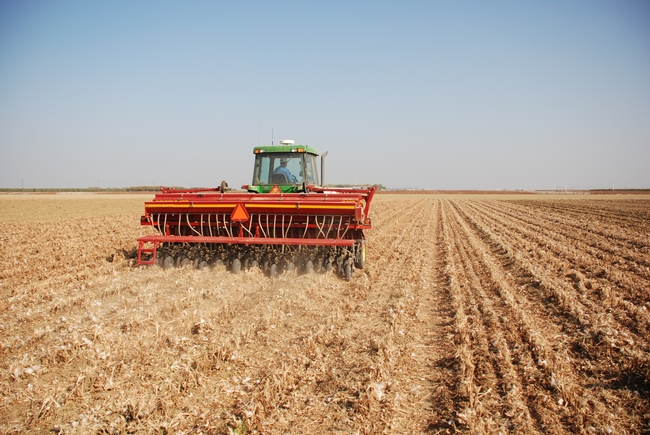
"Attributing ecosystem services to farming is an emerging trend in assessing the benefits of agricultural operations," said Jeff Mitchell, UC Cooperative Extension specialist in the Department of Plant Sciences at UC Davis. "Resource management systems on today’s farms can provide significant benefits to air, water, and soil resources and furnish wildlife habitat. We've now determined that farmers who use cover crops and no-till practices are furnishing still more ecosystem services."
Since 1999, a team of UC researchers, local farmers, Natural Resource Conservation Service conservationists and private sector partners have compared plots at the UC West Side Research and Extension Center managed with cover crops and no tillage to adjoining plots managed with traditional tillage approaches.
"We have seen striking changes in soil properties after sustained cover cropping and no-till management," Mitchell said.
With eight inches of supplemental irrigation over the 14-year period, cover crops produced more than 19 tons of organic matter or about 7 tons of carbon per acre. This biomass resulted in a 23 percent increase in soil carbon in the cover cropped system that was ‘green manured,’ or incorporated back into the soil with tillage, and a 74 percent increase in soil carbon in the no-till cover crop system.
The research team also reported similar increases in total soil nitrogen, with 19 percent more in the green manured cover crop and 59 percent more in the no-till cover cropped system. The value of these changes relates not only to improving favorable soil attributes – such as water holding capacity, reduced runoff and more available nitrogen – but also to the fact that these soils are now serving as greater 'sinks' for carbon and nitrogen.
"That means there is reduced likelihood these elements will enter the atmosphere as greenhouse gases or be leached to groundwater," Mitchell said.
Mitchell said the team also measured increased levels of soil aggregation, which is related to higher water infiltration and greater soil water storage capacity when cover crops and no-tillage are used.
This long-term research continues at the West Side Research and Extension Center to further determine tradeoffs associated with cover cropping and no-tillage practices in terms of water use, input costs and ecosystem service benefits. Dan Munk, UC Cooperative Extension advisor in Fresno County and project partner, points out that this long-term 'systems' work is important because it allows the opportunity to fully assess both the overall costs and benefits of alternative practices.
More information may be found at the Conservation Agriculture Systems Innovation website at http://casi.ucanr.edu/.